
A steamboat is a boat that is propelled primarily by steam power, typically driving propellers or paddlewheels. Steamboats sometimes use the prefix designation SS, S.S. or S/S or PS ; however, these designations are most often used for steamships.

Nicolas-Joseph Cugnot was a French inventor who built the world's first full-size and working self-propelled mechanical land-vehicle, the "Fardier à vapeur" — effectively the world's first automobile.

Robert William Thomson PRSSA FRSE (1822–1873), from Stonehaven, Scotland, was the inventor of the fountain pen and original inventor of the pneumatic tyre.

The Stanley Motor Carriage Company was an American manufacturer of steam cars; it operated from 1902 to 1924. The cars made by the company were colloquially called Stanley Steamers, although several different models were produced.
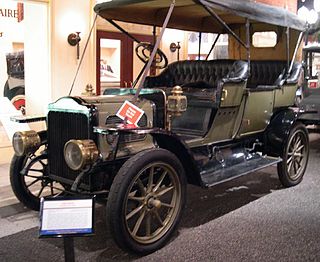
A steam car is a car (automobile) propelled by a steam engine. A steam engine is an external combustion engine (ECE) in which the fuel is combusted outside of the engine, unlike an internal combustion engine (ICE) in which fuel is combusted inside the engine. ECEs have a lower thermal efficiency, but carbon monoxide production is more readily regulated.

Development started as early as the 17th century with the invention of the first steam-powered vehicle, which led to the creation of the first steam-powered automobile capable of human transportation, built by Nicolas-Joseph Cugnot in 1769. Inventors began to branch out at the start of the 19th century, creating the de Rivas engine, one of the first internal combustion engines, and an early electric motor. Samuel Brown later tested the first industrially applied internal combustion engine in 1826.
Abner Doble was an American mechanical engineer who built and sold steam-powered automobiles as Doble Steam Cars. His steam engine design was used in various automobiles from the early 1900s, including a 1969 General Motors prototype and the first successful steam-powered aeroplane.

Sir Goldsworthy Gurney was an English surgeon, chemist, architect, builder, lecturer and consultant,. He was a prototypical British gentleman scientist and inventor of the Victorian era.
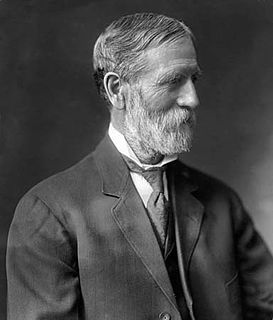
Freelan Oscar Stanley was an American inventor, entrepreneur, hotelier and architect. He made his fortune in the manufacture of photographic plates but he is best remembered as the co-founder, along with his twin brother Francis Edgar Stanley, of the Stanley Motor Carriage Company which built steam-powered automobiles until 1920. He also built and operated the Stanley Hotel in Estes Park, Colorado.
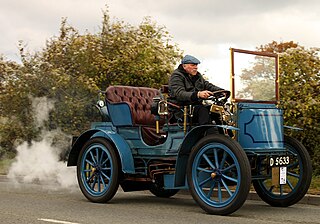
Gardner-Serpollet was a French manufacturer of steam-powered cars in the early 20th century. Léon Serpollet is credited with inventing and perfecting the flash boiler in the late 1800s.
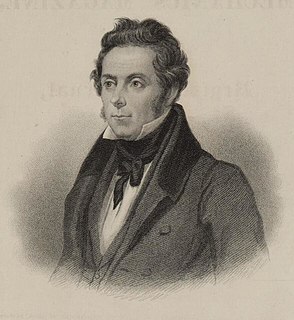
Walter Hancock was an English inventor of the Victorian period. He is chiefly remembered for his steam-powered road vehicles, but also received a patent for preparing and cutting natural rubber into sheets. He was the younger brother of Thomas Hancock, the inventor of rubber mastication who is also claimed by some to be the inventor of rubber vulcanization.

John William Lambert was an American automobile manufacturer pioneer and inventor. He is the inventor of the first practical American gasoline automobile. He operated large manufacturing companies that made transmissions, stationary gas engines, farm tractors, commercial motor trucks, railroad inspection vehicles, and various gasoline driven street cars. He had over 600 patents. In 1891, he built a working gasoline automobile, one year before the Duryea Brothers constructed theirs.

The history of steam road vehicles comprises the development of vehicles powered by a steam engine for use on land and independent of rails, whether for conventional road use, such as the steam car and steam waggon, or for agricultural or heavy haulage work, such as the traction engine.

The Ross was a brass era steam automobile built in Newtonville, Massachusetts from 1906 to 1909.
Charles H. Black was an American carriage maker and automobile pioneer whose business was in Indianapolis, Indiana.

Lucius Day Copeland was a pioneering 19th-century engineer and inventor from Phoenix, Arizona who demonstrated one of the first motorcycles, the Copeland steam bicycle, a steam-powered Star high-wheeler at the first Arizona Territorial Fair in 1884.

The Roper steam velocipede was a steam-powered velocipede built by inventor Sylvester H. Roper of Roxbury, Boston, Massachusetts, United States sometime from 1867–1869. It is one of three machines which have been called the first motorcycle, along with the Michaux-Perreaux steam velocipede, also dated 1867–1869, and the 1885 Daimler Reitwagen. Historians disagree over whether the Roper or the Michaux-Perreaux came first. Though the Reitwagen came many years later than the two steam cycles, it is often labeled as the "first motorcycle" because there is doubt by some experts whether a steam cycle should meet the definition of a motorcycle.

Sylvester Howard Roper was an American inventor and a pioneering builder of early automobiles and motorcycles from Boston, Massachusetts. In 1863 he built a steam carriage, one of the earliest automobiles. The Roper steam velocipede of 1867–1869 may have been the first motorcycle, for which he was inducted into the Motorcycle Hall of Fame in 2002. He is also the inventor of the shotgun choke and a revolver repeating shotgun.
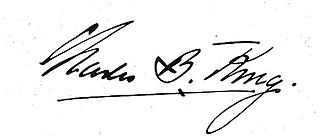
Charles Brady King was an American engineer and entrepreneur remembered as an automotive pioneer, artist, etcher, musician, poet, architect, mystic, industrialist and inventor.

Carl Breer was an American automotive industry engineer. Along with Fred M. Zeder and Owen Skelton, he was one of the core engineering people that formed the present day Chrysler Corporation. He was the moving engineer behind the Chrysler Airflow automobile.


















